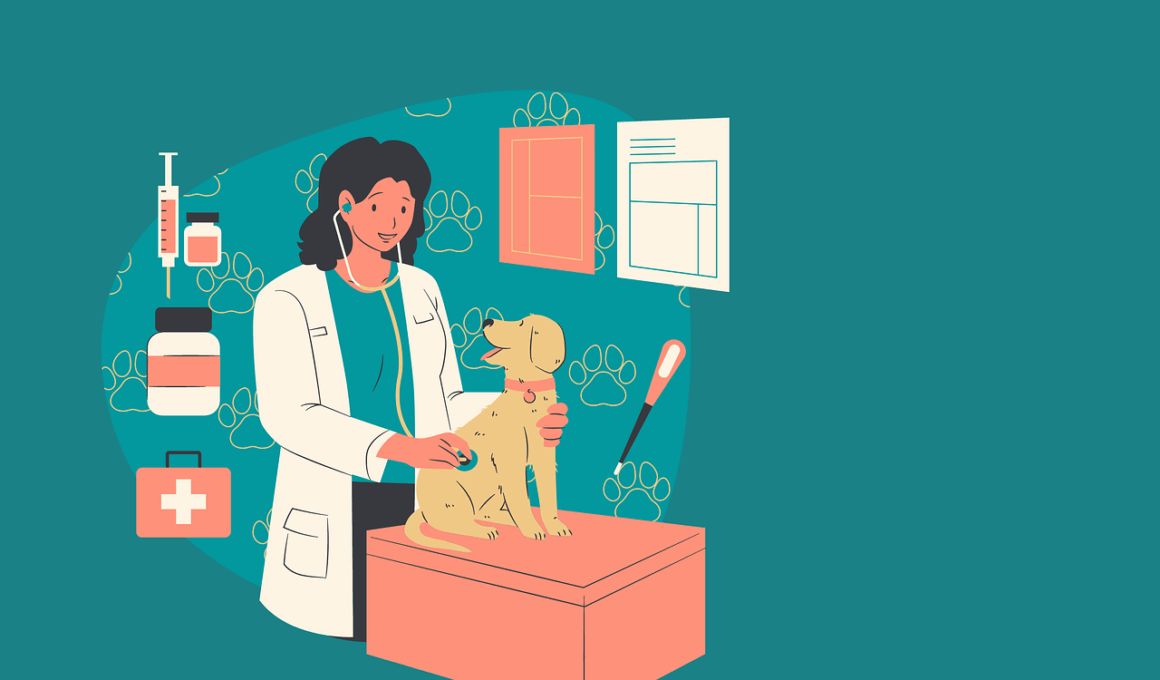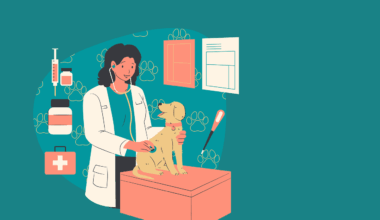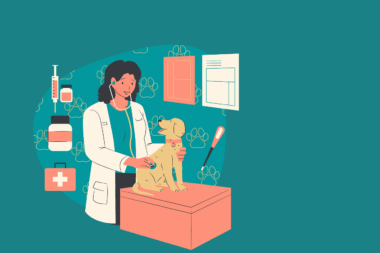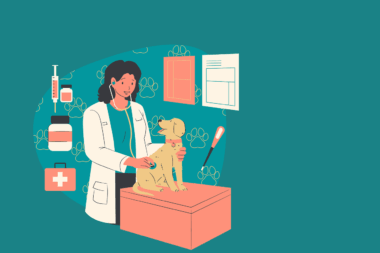Safe Transportation and Its Impact on Dog Show Health
Transporting dogs safely is critical to ensuring their health and well-being during dog shows. Many factors contribute to a safe journey, including proper ventilation and securing the animals in their carriers. Dogs can easily become stressed during travel, which can lead to health concerns. Practicing good habits during transportation helps reduce anxiety for the animals involved. Pre-trip preparation is key; ensure that carriers have sufficient airflow and that dogs are familiarized with them prior to departure. Also, monitor the temperature and hydration levels to avoid discomfort. When traveling long distances, frequent breaks are essential. Utilize this time to allow dogs to stretch, relieve themselves, and drink water. Therefore, planning your travel route and schedule can create a less stressful experience. It’s also wise to note any available veterinary services along the way in case of emergencies. Keeping a travel kit with essentials, such as food, water, and first aid supplies, ensures you are ready for various situations. Overall, the health of competitors at dog shows can be significantly improved through adequate transportation methods.
Dogs’ immune systems are put to the test during dog shows, particularly when their transportation involves other animals. Infectious diseases can spread quickly if precautions are not taken. Therefore, ensuring your pet is up to date on vaccinations is necessary prior to competing. Moreover, creating an environment that minimizes the spread of illness involves both diligence and awareness. Before attending the show, consult your veterinarian for tailored advice on vaccines, as some may be mandated by the venue. Familiarizing yourself with the venue’s health protocols can offer protection for you and your dog. One should also consider the safety of food and water supplied during shows; keep items sealed and monitor their sources. Alongside vaccination, monitoring your dog’s condition post-transport is crucial. Look for signs of illness such as lethargy, reduced appetite, or unusual behaviors. Isolate your dog if symptoms arise and consult a veterinarian for guidance. Additionally, utilizing hand sanitizers and disinfectants can promote a germ-free environment while in close proximity to other competitors. Taking these steps before and during the show contributes to the health of your furry friend.
Proper Hydration During Travel
Hydration is an essential component of a safe travel routine for dogs headed to shows. Transporting dogs without adequate hydration can lead to various health issues, such as dehydration and heat-related complications. Providing fresh, clean water during trips is critical. Scheduled breaks should include time for your dog to drink; avoid waiting until the animal shows signs of thirst. To facilitate hydration, consider a collapsible bowl to make it convenient during stops. It’s also important to monitor how much your dog drinks, particularly in hotter weather. Avoid feeding your dog too close to departure or during travel to minimize the risk of motion sickness; instead, offer food once you reach your destination. Alongside water, maintaining an appropriately cool temperature inside the vehicle prevents overheating, an often-overlooked health risk. Keeping the windows slightly open or using air conditioning can make travel pleasant for your canine companion. Furthermore, carrying ice cubes in a cooler can be a good alternative for hydration. To summarize, proper hydration practices contribute directly to the overall health and performance of dogs in shows.
Another critical aspect of transportation relates to the physical condition of your dog upon arrival. Dogs engaged in rigorous travel may be susceptible to strains or injuries if not properly secured during transit. Using harnesses or safety jackets ensures that the dog’s movement is restricted, preventing accidents. It’s also advisable to assess your dog’s physical state after traveling, as fatigue can play a significant role in performance during the show. Once you’ve reached your destination, allow your dog to rest adequately before entering the competition ring. A warm-up session can help your pet ease stiffness accumulated during travel. Moreover, favorable conditions in transportation reduce the chances of injury; ensure the travel crate is appropriately sized and well-padded. It’s also vital to understand your dog’s behavioral signs during travel; any signs of anxiety or discomfort should be addressed immediately. Consider practicing short trips to familiarize your dog with the traveling process. Optimizing these factors can contribute positively when competing. Ensure your canine partner has become accustomed to traveling, enhancing overall performance and well-being during events.
Health Considerations for Different Breeds
When preparing for dog shows, it’s essential to consider various breeds and their unique health requirements during transportation. Different breeds may have specific vulnerabilities ranging from respiratory issues to joint problems. Brachycephalic breeds, for instance, face increased challenges concerning breathing, particularly in warm environments. Owners of these breeds should take extra precautions during travel by ensuring proper airflow within their carriers. This care can mitigate the risk of heat stress and other complications. It’s advisable for owners to research unique needs based on breed characteristics. Understanding a breed’s limitations helps inform decisions regarding travel distances and methods. Additionally, senior dogs often require special attention due to potential mobility issues. Travel crates should cater to their comfort with enough room to move freely without risk of injury. Moreover, familiarize the dog with the travel process to ease anxiety. Also, dogs recovering from injuries need careful monitoring during travel to prevent exacerbation. Consult a veterinarian about any specific concerns related to your breed so that you can adhere to safe transport practices while prioritizing health.
Lastly, mental health is often underestimated during transport and its impact on dogs in shows. Stress from transportation can cause behavioral changes that hinder performance, making it vital for handlers to remain calm and composed. Using soothing techniques, such as calming music or familiar bedding, promotes relaxation in dogs while traveling. Mechanisms to ease anxiety, such as pseudo-pharmaceutical options prescribed by a vet, can also be beneficial for particularly anxious dogs. Creating a routine can significantly help; consistency tends to comfort animals in stressful situations. Furthermore, socialization prior to the event prepares dogs for the competitive environment, reducing post-transport stress. Attending training sessions or exhibitions provides opportunities for dogs to become accustomed to diverse settings, people, and other animals. Consistent exposure diminishes shock during transportation and can enhance performance. Remember to remain observant for any signs of stress during travel to mitigate discomfort. By taking care to manage anxiety, handlers maximize their dogs’ chances of success at shows. Prioritizing mental health alongside physical care ensures a complete approach to dog show readiness.
Conclusion: Bridging Transportation and Health
In summary, safe transportation plays a vital role in the health of dogs attending shows and can significantly impact their performance. From hydration to managing anxiety, each aspect contributes to improving overall well-being. Pre-planning, including routes, stops, and accommodations, reinforces a healthier experience. Being proactive about health considerations specific to breeds can promote optimal conditions. Regular communication with veterinarians ensures owners comply with health and safety protocols consistently. Additionally, handlers must be cognizant of their dogs’ needs both physically and mentally—two intertwined facets that can not be disregarded. Transportation is more than just getting from one place to another; it is a carefully orchestrated process that safeguards the canine participants’ health and competitive spirit. Prioritizing effective strategies for safe transportation comes down to the well-being of the dog. Handlers dedicated to this holistic approach are likely to witness significant benefits during shows. By focusing on safe transportation practices, all stakeholders can ensure that the competitors are in peak condition, reinforcing the importance of well-managed travel experiences.
Appropriate preparations during transportation grants dogs the potential to showcase their best performance at various dog shows. Safety and health ultimately should be the primary focus, ensuring that all participants are set up for success.





